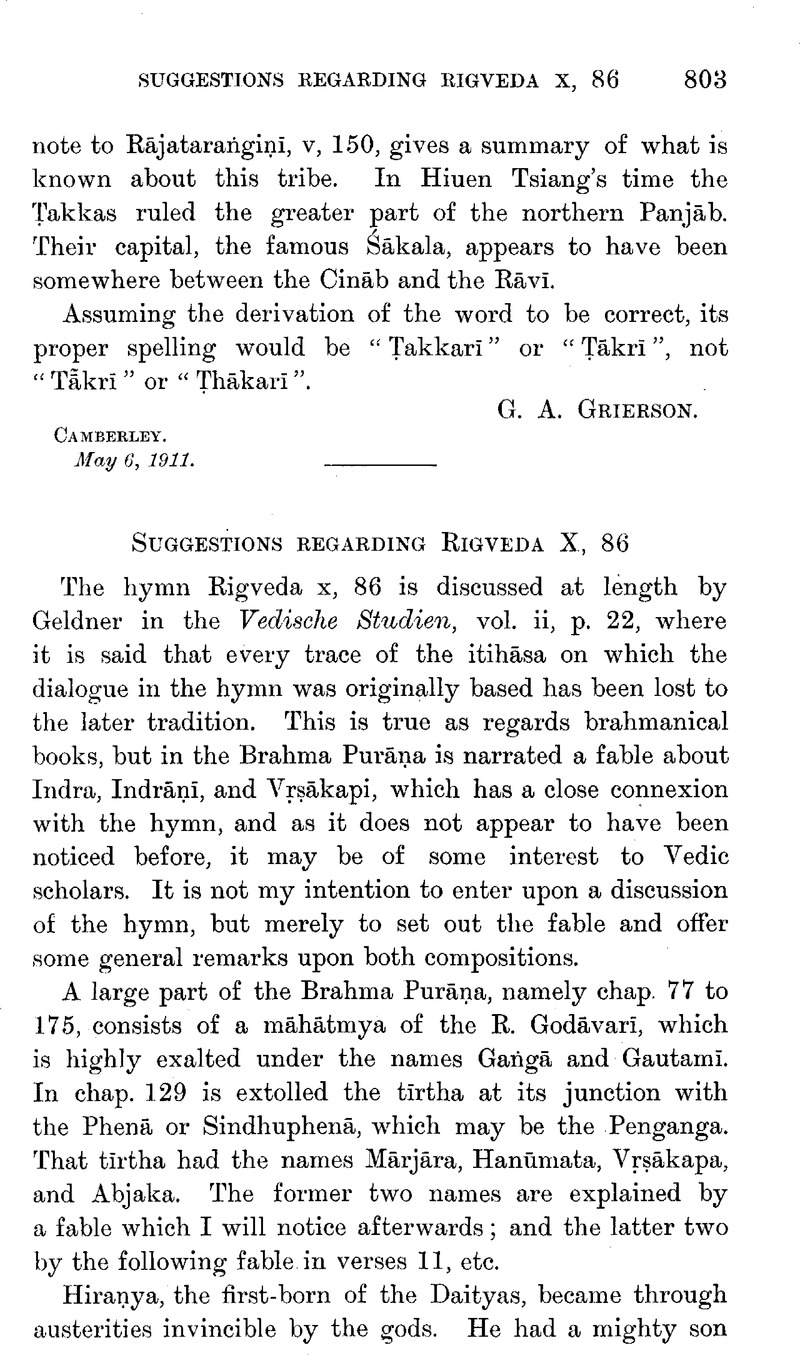Article contents
Suggestions Regarding Rigveda X, 86
Published online by Cambridge University Press: 15 March 2011
Abstract

- Type
- Other
- Information
- Copyright
- Copyright © The Royal Asiatic Society 1911
References
page 804 note 1 ![]() , verse 16.
, verse 16.
page 805 note 1 Or perhaps “body”. ![]() Aṅgena here may have a special sense.
Aṅgena here may have a special sense.
page 805 note 2 Abjaka is also mentioned in chap. 128, verse 82.
page 807 note 1 The comparative expressions employed in verse 6 have a general reference, and therefore the last expression implies an allusion to some custom and may perhaps find an explanation in a custom common among the lower classes, which may be cited: ![]()
![]()
![]() This custom is widespread in India and may perhaps have belonged to the aborigines. Cf. perhaps verses 16 and 17.
This custom is widespread in India and may perhaps have belonged to the aborigines. Cf. perhaps verses 16 and 17.
page 808 note 1 Hariv. 96, 5333. A graha or demon, named Sumahākapi, is mentioned, id. 168, 9562.
page 808 note 2 See JRAS., 1910, pp. 6, 53.
page 809 note 1 Yāska's and Sāyaṇa's explanations of Vṛṣsākapi seem so fanciful that it may be doubted whether they were not meant to cloak the fable.
- 1
- Cited by




